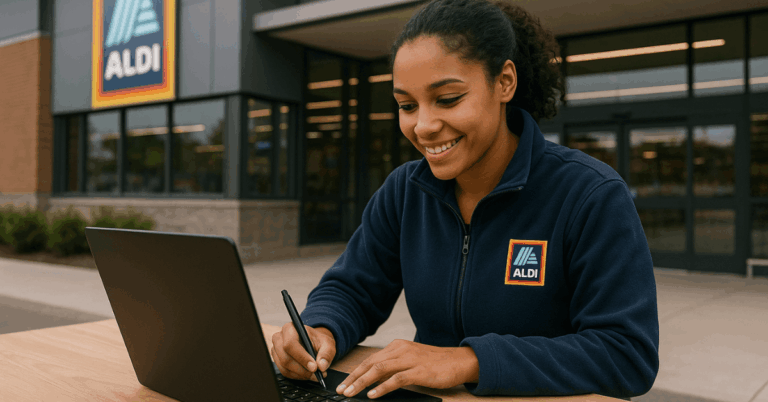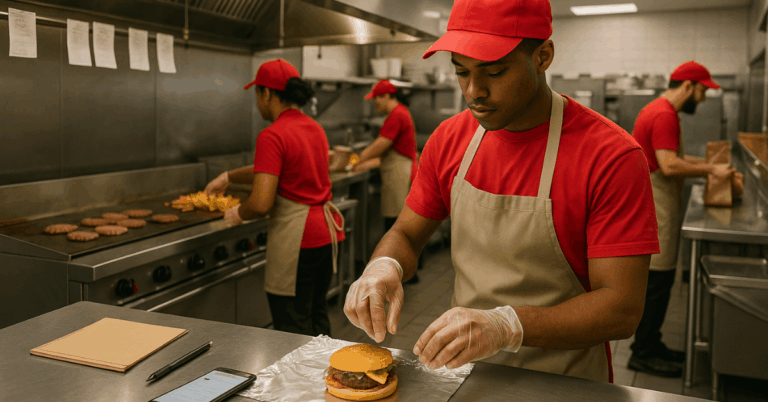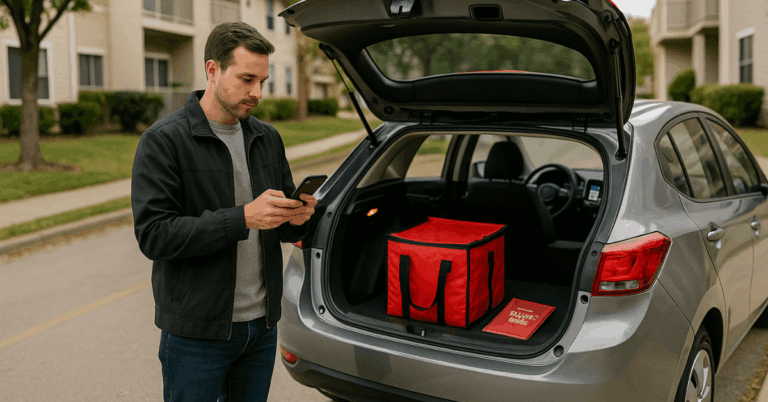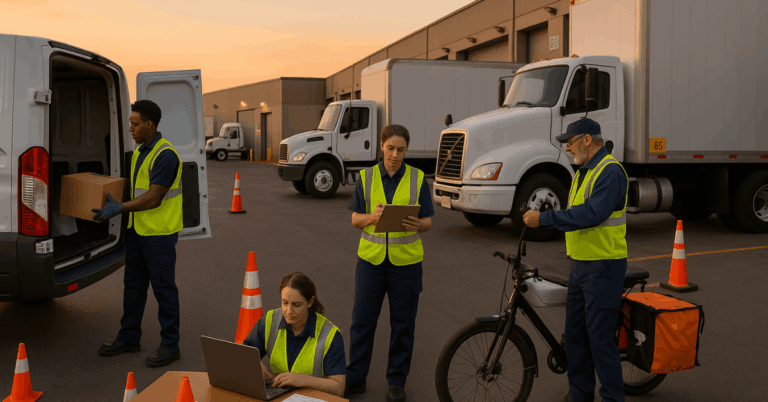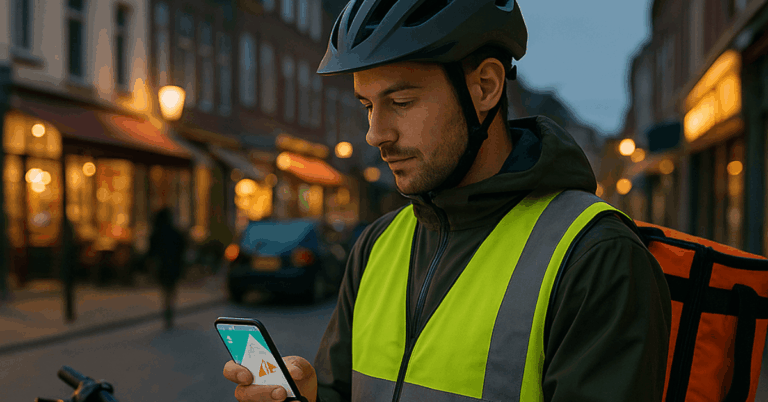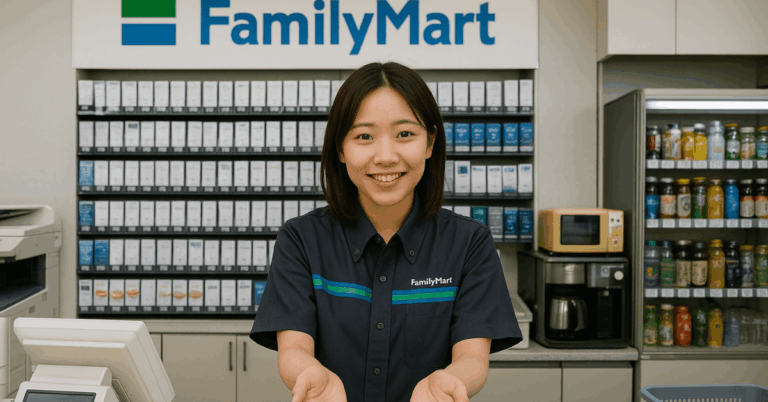Finding fast, flexible income that fits changing schedules can feel impossible without clear options. Uber Eats Food Delivery offers on-demand work where shifts begin and end on your terms, payouts arrive quickly, and tips go entirely to you.
Registration happens in the app, deliveries run through your chosen vehicle, and requirements stay straightforward for most cities worldwide. Treat this as practical, step-by-step guidance to start safely, earn consistently, and avoid common mistakes.
What Uber Eats Food Delivery Is
Uber Eats operates a marketplace connecting restaurants, couriers, and customers through a mobile app.

As a delivery partner, tasks include accepting offers, collecting orders, and delivering to the customer’s doorstep while the app tracks routes, earnings, and tips.
The platform supports cars, motorbikes, and bicycles in many locations, allowing a fit based on local rules, budget, and terrain.
Earnings combine base pay, variable adjustments, and customer tips, then move to your account through weekly transfers or same-day cash-outs.
Who This Work Suits
Strong candidates value autonomy, structured habits, and predictable routines over a fixed hourly role. Those managing school, caregiving, or another job can compress work into peak dining periods for efficient earnings.
Newcomers to gig work should start with short sessions, learn local hotspots, then expand into longer blocks once comfortable. Anyone seeking benefits, guaranteed schedules, or salaried stability should consider alternative employment.
Couriers in dense urban areas with bike-friendly streets may see smoother routes, while suburban drivers often rely on cars or scooters for longer distances.
How Uber Eats Works
Short orientation helps first-time couriers avoid wasted time and missed payouts. The process below reflects how the app typically operates across many regions while acknowledging local differences.
- Create an account in the Uber Eats app, submit requested details, and agree to terms.
- Choose a vehicle profile, car, motorbike, or bicycle, based on local availability.
- Complete checks required by your market, then open the app and go online.
- Review incoming offers, including estimated pay and distance, then accept or skip.
- Navigate to the restaurant, verify items, deliver promptly, and confirm hand-off in app.
Requirements And Eligibility
Local rules differ, yet several patterns recur worldwide. A concise comparison keeps expectations realistic while avoiding over-generalization.
| Requirement | Car / Motorbike | Bicycle | Notes |
| Age & ID | Government ID; local minimum driving age | Government ID; local minimum rider age | Varies by country and city |
| License | Valid driver’s license where required | Usually not required | Scooters/motorbikes typically require a license |
| Vehicle | Roadworthy, insured where applicable | Safe, maintained bike | Helmet and lights often required |
| Smartphone | iOS or Android running current app | iOS or Android running current app | Stable data plan recommended |
| Background Checks | May apply in some markets | May apply in some markets | Platform notifies inside the app |
Account Setup And Verification
Profile creation requires accurate identity details, a working phone number, and a current email address.
The platform may request additional documents based on vehicle type or local law, including proof of address or insurance when applicable.
Verification times range widely; checking the app daily ensures faster resolution on any pending items. Clear, legible uploads prevent delays, especially when submitting licenses or registration.
Earnings, Pay, And Payout Options
Earnings come primarily from completed deliveries, adjusted by distance, time, and local demand. Tips pass directly to couriers without platform deductions, which makes service quality and punctuality especially valuable.
Weekly automatic transfers suit those comfortable batching income, while same-day cash-outs support urgent expenses.
| Payout Method | Timing | Typical Use Case | Notes |
| Weekly Transfer | Once per week | Routine budgeting and predictable cash flow | Default option in many regions |
| Instant Pay | Up to five times daily | Urgent expenses or end-of-shift cash-outs | Availability varies by market |
| Tips | Posted after delivery | Extra income tied to service quality | Couriers keep 100% of tips |
How Pay Is Calculated
Base pay reflects delivery distance and time, then dynamic elements may adjust offers during busy windows. Shorter routes in dense areas can produce higher trips per hour, while longer suburban routes depend more on efficient batching and navigation.
Tips often become the swing factor, especially during peak dinner periods and in neighborhoods where on-time hand-offs and professional communication stand out.
Misreads usually involve confusing “offer shown” with “final pay.” Final totals can update after tips post or if the order changes. Tracking daily averages across five to ten trips provides a steadier picture than reacting to any single payout.
Strategies To Maximize Earnings
A few operational habits produce consistent gains without guesswork or hype. Focus on repeatable behaviors and measurable results.
- Target peak hours Uber Eats demand around lunch and dinner, including Friday and weekend evenings.
- Keep acceptance decisions disciplined, decline low-pay, high-distance offers that destroy hourly averages.
- Position near clusters of restaurants to reduce dead miles and shorten pickup times.
- Communicate inside the app; quick updates reduce cancellations and often improve tips.
- Audit daily metrics weekly, trips per hour, miles per trip, average payout, and adjust zones accordingly.
Vehicle Choice, Costs, And Comfort
Selecting a vehicle impacts earnings, stress, and maintenance significantly. Uber Eats bicycle delivery lowers costs, avoids parking issues, and suits dense cores, though weather and hills limit coverage.
Motorbikes trade speed for fuel and insurance costs, working best in traffic-heavy cities. Cars handle longer distances, large orders, and poor weather, yet fuel prices, parking, and depreciation add up quickly.
Maintenance follows usage rather than calendar time. Routine checks for brakes, tires, lights, and chains prevent mid-shift failures. Protective gear and reflective elements improve visibility, especially during rainy seasons or night routes.
Safety, Insurance, And Local Rules
Safe operation begins with basics: defensive riding/driving, clear hand signals, and compliance with road laws. Helmets, gloves, and weather-ready layers keep focus sharp during longer shifts.
Many regions require third-party liability coverage for motor vehicles; confirm details in policy documents and the app. Questions about Uber Eats car insurance should be directed to your insurer for written confirmation, especially where delivery use requires specific endorsements.
App security matters as well. Enable two-factor authentication, avoid sharing account credentials, and report lost phones immediately. Keeping receipts and order notes assists when resolving item disputes or partial refunds.
Where To Work: Zones, Heatmaps, And Timing
High-performing couriers analyze maps rather than chasing random pings. Restaurant clusters near business districts often perform well at lunch, while residential areas light up during evenings.
Monitoring Uber Eats delivery zones and real-time heatmaps helps position correctly before demand spikes. Rotating between two or three favorite zones prevents stagnation and reduces long, unpaid repositioning drives.
Time of day shapes strategy. Late breakfasts serve offices, early dinners serve families, and weekend late nights serve entertainment districts. Short, high-focus blocks around those moments often beat marathon shifts.
Pros And Cons In Plain Terms
Strengths start with schedule control, scalable hours, and transparent tips. Instant cash-outs support urgent needs, and weekly transfers support predictable budgeting.
Simple app flows make onboarding fast for most markets, provided documents are current and legible. Trade-offs include variable demand, weather risks, and vehicle costs.
Long distances with low-pay offers can erode hourly results without disciplined acceptance criteria. Learning curves around routing, parking, and restaurant wait times improve with practice, but early sessions may feel inefficient.
Multi-App Strategies And Stabilizing Income
Income volatility can drop sharply when diversifying thoughtfully. Running a second delivery app during slow periods, often called multi-apping for couriers, fills gaps while maintaining selective acceptance.
Keep apps paused when actively handling an order to avoid cancellations or late arrivals. Track which zones pair well across platforms, then create a rotation that preserves on-time metrics.
Side work such as parcel delivery or local errands may complement food runs during mid-afternoon lulls. Efficient stacking requires clear boundaries; never accept overlapping orders that jeopardize food safety or punctuality.
FAQs: Practical Answers For New Couriers
Planning questions appear repeatedly during the first month. The short answers below address the most common concerns directly so early decisions stay grounded and safe.
- How fast can payouts arrive? Instant cash-outs are available in many regions up to five times per day, while weekly transfers run on a regular schedule set inside the app. Bank processing times vary, so linking a compatible account simplifies timing.
- Are tips guaranteed? Tips remain voluntary and customer-driven. Clear communication, accurate pin-drops, and professional hand-offs increase tip rates meaningfully over time.
- What are the core Uber Eats driver requirements? Expect government ID, a valid driver’s license for cars or scooters where required, a suitable vehicle profile, and a compatible smartphone. Background checks may apply depending on local law.
- Does the platform supply insurance? Platform protections vary by market and do not replace personal or commercial coverage obligations. Confirm policy wording with your insurer, especially for motor vehicles used in deliveries.
- How many hours should beginners work? Start with short blocks during obvious peaks, track results, then add time strategically. Building smart routes matters more than raw hours.
Conclusion
Uber Eats Food Delivery offers fast entry, flexible scheduling, and straightforward payouts suited to many life stages.
Success depends less on secrets and more on sensible habits: peak-hour focus, selective offers, safe operation, and accurate documentation.
Treat the platform as a practical tool for near-term cash flow and skill building, then refine routines until results match personal income targets.

